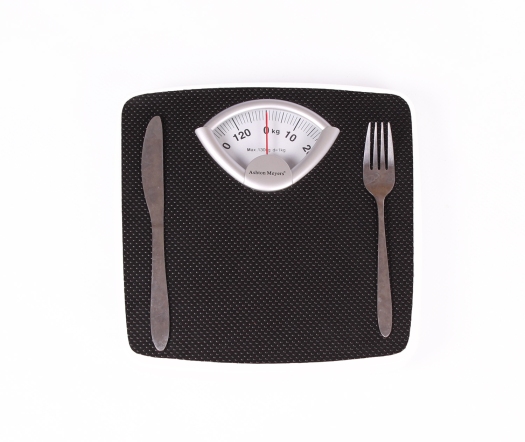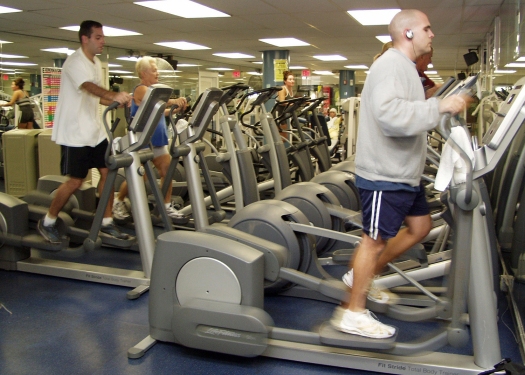When I was new to strength training, I used to constantly chase one rep maxes. I was enjoying the beginner gains phase of my lifting career by adding weight to the bar almost every single workout. This was one reason I fell in love with powerlifting early on: it was exciting and empowering to see such rapid improvement.
However, as any experienced lifter knows, I wasn’t able to sustain this rate of progress forever. It started to take longer and longer to set new PRs. My workouts became more grueling and I had to work harder to eke out smaller gains. Eventually, my progress seemed to stall altogether. I hit my first training plateau.
It seems many of my friends and readers are experiencing similar frustrations, because I’ve been getting a lot of questions about plateaus. After working with hundreds of clients over the years, I have learned that when progress stalls at the gym, people are usually making at least one of these mistakes:
- Chasing too many conflicting goals at once.
- Always performing the exact same number of reps.
- Never switching exercises.
- Only focusing on barbell lifts and neglecting assistance/accessory/supplemental exercises.
- Not following a structured training program.
I’m going to share my top strategies and solutions to overcome all five of these roadblocks below. Addressing just one of these in your own training can make a significant difference for your results, making your training much more enjoyable.
Get clear about your goals
When asked about their goals, many people say they want to get stronger on their big lifts, and lose weight and build muscle, all while training for a 10k race. This kind of shotgun approach to training is a recipe for lackluster results and frustration. For best results, pick one goal to focus on at a time.
Although the bulk of my training centers around certain core principles, I always tweak programs depending on individual client goals. I want all my clients to build strength, but the client who is training for a powerlifting meet needs more specificity and intensity than the client who just wants to feel better on a daily basis. I believe everyone should perform some cardio, but clients who want to lose weight may need more than clients whose priority is to build muscle.
It’s important to have a clear focus so we know what’s important right now and what can wait. We can’t do all the things all the time at the gym. Instead, choose one major goal for every 3-4 months of training. In addition, I rarely recommend clients chase the same goals all the time because this also leads to plateaus, frustration, boredom, and burnout. Instead, most people should shift gears at least a few times per year.
If you’re not sure what to focus on, try picking your goals based on the season. Winter and spring are great times to focus on fat loss as you get ready for the summer. When the weather is nice, cut back on gym time so you have more freedom to be active and spend time outdoors. In the last third of the year, prioritize building strength and muscle to capitalize on the extra holiday calories you’ll be consuming. Structuring your training in this way can help you make steadier progress over the long term.
Sometimes it’s your diet, not training, that’s causing the plateau. If your primary goal is to lose fat, your results are heavily affected by long-term diet adherence. You can’t out train your diet if you’re consuming more calories than you need. On the flip side, some people don’t eat enough to support their goals. If you want to get big and strong, you need to eat lots of high quality foods to support intense training. Consuming a high quality protein source and some carbs around your workout time can make a world of difference for your performance at the gym.

Train in different rep ranges
Almost every time I talk to a new client who’s been stuck in a rut, they’ve been doing the same number of reps for a long time. Whether you use 5×5, 3×10, or are constantly trying to hit 1 or 2 rep maxes, you won’t make progress indefinitely. Eventually, you need to make a change to introduce some novel stimulus to your training.
What that change looks like depends on what you’ve been doing. If your training looks like mine once did – lots of heavy, low rep sets – try building strength in higher rep ranges. If you’re doing a lot of higher rep sets, try reducing the reps and moving heavier weights. I like to change reps every 4-6 weeks to avoid excessive fatigue or plateaus. However, some people (mostly newer trainees) can get away with longer periods of time.
When I write programs for my clients, I select reps based on an alternating linear periodization model I learned from the coaches at Strength Faction. Here’s how this works:
Let’s say my client is about to start a four-month block of training. In month one, we start by performing six reps on their big lifts to lay a solid foundation. The next month we drop the reps down to three. My client should be lifting significantly heavier weights on the same exercises. In the third month, the reps jump back up to five. If my client can move the same or heavier weights for the additional reps, we’ll know they’re making progress. Finally, I reduce the reps to two in the final month. This is where all the hard work my client has put in over the last three months really pays off. Performing only two reps gives them the chance to set new PRs and move some serious weight.
I’ve found this to be the best approach to ensure consistent long term progress for the vast majority of my clients. You get stronger, your training stays interesting, and you are less likely to get injured or stuck in plateaus.
Switch exercises
No one can make steady progress on the same exercise forever. If you aren’t seeing strength gains, or if an exercise is leaving you excessively sore or tired, it may be time to cycle it out of your workouts for a while.
Don’t perform every exercise you know each time you go to the gym. I see this most commonly when people are trying to build muscle. For example, their chest day includes flat bench, incline bench, decline bench, flyes, and pushups in a single workout. What happens when their progress at the gym slows or they stop building muscle? They have no fresh exercises left to substitute. It’s better to leave a few exercises out of your regular rotation so you can cycle in new things when you hit a plateau.
What if your goal is to build strength on specific exercises? Won’t taking a break from these exercises hurt your progress?
When I was first getting into powerlifting, I spent over a year following the Westside Barbell method. Most of the Westside training focuses on exercises that are similar to, but not exactly the same as, the big three powerlifts. Building strength with these alternative exercises can help improve technique, improve your weak spots, and make you a more well-rounded lifter who is less prone to injuries.
Instead of just doing the same big lifts all the time, try building strength with these same-but-different options:
Instead of back squatting, try…
- Barbell front squat
- Barbell zercher squat
- Safety bar squat
- Box squat (could be back, front, zercher, or safety bar)
- Heavy dumbbell or kettlebell squats
- Heavy single leg movements like step ups, split squats, and lunges
Instead of bench pressing, try…
- 2 or 3 board press
- Barbell incline bench
- Barbell floor press
- Close grip barbell bench press
- Heavy dumbbell pressing variations
Instead of deadlifting, try…
- Switching stance (sumo vs. conventional deadlift)
- Rack pulls from different heights
- Block pulls from different heights
- Trap bar deadlift
- Heavy kettlebell deadlifts
Don’t neglect other exercises
Once you’ve been lifting for a while, it’s difficult to get stronger or build muscle using only the big barbell lifts. If you want to avoid injuries and see steadier progress, include plenty of dumbbell, kettlebell, cable, bodyweight, and even machine exercises. I group these other exercises together and call them “assistance training”, because while they aren’t the main focus of your workout, they support you as you work to achieve your goals.
On numerous occasions, I’ve met with new clients who want to build strength but who aren’t doing much in the way of assistance training. They’ve spent a lot of time practicing with the barbell but they can’t perform a quality RDL, lunge, row, or dumbbell press. It’s amazing how much progress they make just by introducing a handful of targeted assistance exercises to their workouts.
Here’s a quick rundown of some of my favorite assistance exercises to help you get stronger on the three powerlifts.
If you want to build a stronger barbell squat, try…
- Dumbbell and kettlebell squats
- Single leg exercises like step ups, split squats, lunges, single-leg squats
- Glute bridges and hip thrusts using a variety of implements
- Leg curls
- Core exercises like dead bugs, planks, and other anti-core movements
If you want to build a stronger barbell bench, try…
- Dumbbell pressing: flat, incline, decline, floor press
- Lots of upper body pulling, especially horizontal rows of all kinds
- Pushups
- Tricep isolation work like cable pushdowns, close grip pushups, and skullcrushers
If you want to build a stronger deadlift, try…
- Other hip hinges like Romanian deadlifts, pull throughs, and kettlebell swings
- Lots of upper body pulling, especially horizontal rows of all kinds
- Grip work, especially loaded carries
- Glute bridges and hip thrusts using a variety of implements
- Core exercises like dead bugs, planks, and other anti-core movements
Read more: Core Training Beyond Crunches
Follow a structured program
I’ve included a ton of information about goal setting, program design, exercise selection, and training philosophy in this blog. If you feel overwhelmed, or simply want to ensure you’re doing the things you need to do to keep making progress, you are best off following a structured training program. Hiring an in-person coach or an online trainer is the best way to get a program uniquely tailored to your goals, likes and dislikes, and resources. When you work directly with a coach, they can also tweak your program as you go if you aren’t seeing the results you want.
Getting in shape is a long game. Practicing patience, regularly re-assessing, and taking a big-picture approach to your training can keep workouts fun and help you push past the inevitable training plateaus.
Looking for a training program? I created Full45 to help you get strong and see renewed progress even if you have minimal access to equipment and little time to train. Check it out to grab your copy for three months of structured done-for-you-workouts.




















